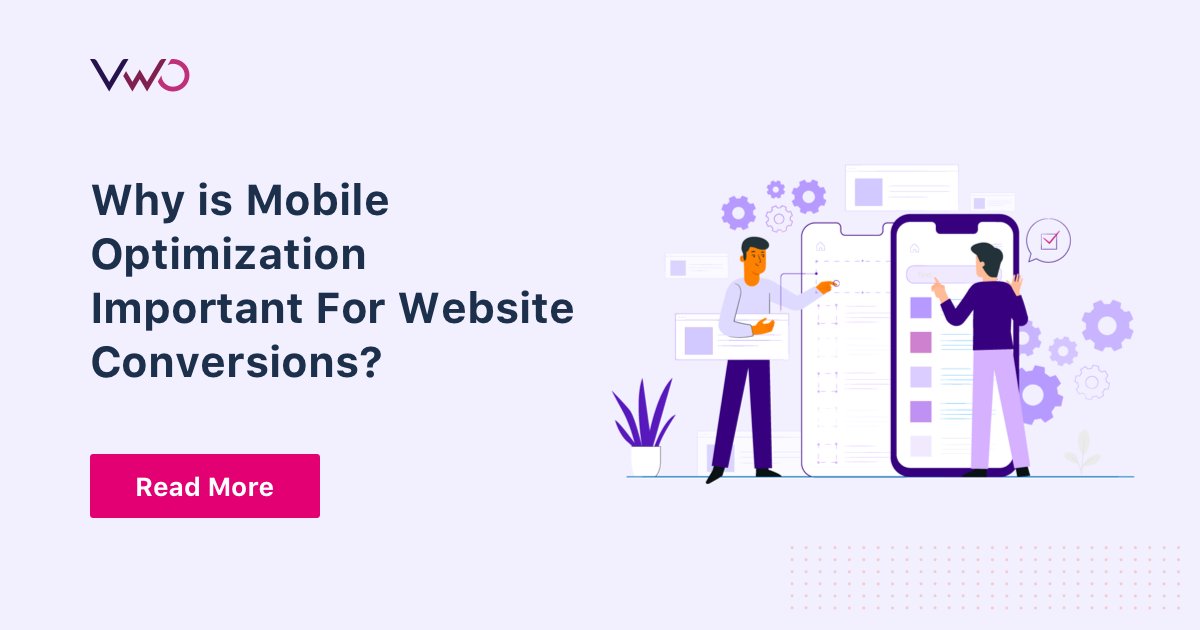Boost Individual Experience with Cutting-Edge Mobile Optimization
Boost Individual Experience with Cutting-Edge Mobile Optimization
Blog Article

The Ultimate Overview to Mobile Optimization: Methods for Enhancing Web Site Efficiency on Smartphones and Tablets
The approaches for improving web site performance on mobile systems go past mere adaptation; they encompass an extensive approach that includes responsive design, speed optimization, content methods, and customer experience improvements. By diving into the ins and outs of mobile optimization, services can not just satisfy individual assumptions but also stay in advance in a competitive electronic landscape.
Significance of Mobile Optimization
Mobile optimization plays an essential duty in boosting individual experience and driving conversion rates in the ever-evolving electronic landscape. With the increasing use mobile phones and tablets for searching the internet, making certain that sites are maximized for mobile phones has become important for businesses - Mobile Optimization. A mobile-optimized website not only adjusts perfectly to various display dimensions yet likewise tons quickly, giving customers with a smooth and satisfying surfing experience
In today's hectic globe, individuals expect instantaneous access to details on the move. An internet site that is not maximized for mobile phones risks shedding prospective consumers as a result of slow loading times or a bad user interface. By buying mobile optimization, services can deal with the needs of their mobile audience, causing higher engagement and enhanced conversions.
In addition, search engines like Google focus on mobile-friendly web sites in their positions, making mobile optimization vital for improving exposure and drawing in natural traffic. Mobile Optimization. On the whole, the value of mobile optimization can not be overemphasized, as it directly influences user fulfillment, conversion prices, and general business success in the electronic realm
Responsive Style Techniques
Applying responsive style techniques makes certain that web sites dynamically readjust their format and content based on the individual's device screen dimension, supplying a consistent individual experience throughout various platforms. Among one of the most common approaches made use of in receptive layout is creating fluid grids that enable material to resize proportionally to the display dimension. This makes sure that aspects on the page maintain their family member spacing and arrangement, maximizing the seeing experience for customers on various tools.
Furthermore, using flexible images that can scale with the dimension of the viewport helps stop photos from being chopped or distorted on smaller screens. CSS media questions play a critical duty in responsive design by permitting developers to apply certain styles based upon the gadget features such as screen width, elevation, and alignment. By leveraging media queries, web sites can adjust their design and style to suit smart devices, tablet computers, and desktop displays effortlessly.
Including responsive style techniques not see here only boosts customer experience but likewise adds to boosted internet search engine positions, as internet search engine like Google prioritize mobile-friendly sites in their mobile search engine result. By embracing receptive layout, web sites can satisfy the varied requirements of individuals accessing content on a variety of tools, inevitably driving interaction and conversions.
Speed and Performance Optimization

One key technique is maximizing photos and multimedia web content to minimize data dimensions without endangering high quality. Compressing pictures, leveraging modern image formats like WebP, and lazy filling offscreen images work techniques to accelerate lots times (Mobile Optimization). Minimizing HTTP demands, leveraging browser caching, and minimizing server response times are important actions in boosting efficiency.
Applying a material distribution network (CDN) can additionally considerably improve website speed by dispersing material throughout multiple web servers worldwide, decreasing latency for individuals accessing the website from various locations. Focusing on vital above-the-fold material and deferring non-essential scripts can better enhance viewed performance. By concentrating on rate and performance optimization, websites can supply a seamless and rewarding customer experience on mobile phones.
Mobile-Friendly Material Methods
To enhance web content for smart phones, it is vital to prioritize readability and involvement with critical formatting and concise messaging. Mobile-friendly material techniques include customizing the discussion of information to match the smaller sized displays and on-the-go nature of smartphone and tablet computer individuals. One vital aspect is find out here now to guarantee that text is quickly legible without the demand for zooming in, making use of font dimensions that are legible on mobile displays. In addition, separating material into shorter paragraphs and using bullet factors can aid boost readability and make it much easier for customers to take in information swiftly.
Incorporating engaging visuals, such as photos and videos enhanced for mobile watching, can additionally improve the total customer experience. These visuals should matter, you could look here top notch, and load swiftly to avoid customers from wearying. Additionally, integrating interactive elements like tests, polls, or surveys can improve customer involvement and urge energetic participation.
Individual Experience Enhancements
Building on the structure of mobile-friendly content strategies, enhancing user experience requires enhancing every touchpoint to make sure smooth communication and satisfaction for mobile individuals. One crucial facet of enhancing customer experience on mobile devices is making sure quick packing times.
Maximizing forms for mobile customers by minimizing the number of areas and using auto-fill attributes can also improve the general individual experience. By focusing on these customer experience enhancements, sites can properly involve and maintain mobile visitors.
Conclusion
In verdict, mobile optimization is vital for improving website efficiency on mobile phones and tablets. By applying receptive layout methods, enhancing rate and efficiency, creating mobile-friendly content, and boosting user experience, businesses can properly get to and involve with their mobile target market. It is vital for websites to adapt to the raising mobile use patterns in order to continue to be affordable in the electronic landscape.
Report this page